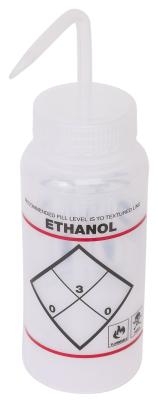
Ethanol is a sustainable form of fuel for your car. A type of alcohol made from corn, ethanol has been used as a fuel source for years, but it's been gaining popularity in recent decades as both consumers and companies have sought alternatives to gasoline and petroleum. And for individuals especially interested in sustainable fuel sources, it's possible to distill your own ethanol for personal use. All you need to do is construct an alcohol still and ferment a mixture of sugar and yeast.
Construct your own boiler for the still by repurposing used high-capacity pots, steel buckets or pails, dough pans, beer kegs, or swimming pool filters. You might need to modify these materials before using.
You'll need to be able to separate the boiler from the column to clean it occasionally, and the boiler should have a tight-fitted, removable top.
Construct the top end for the boiler out of the copper tubing. Solder and assemble the tubes with the copper fittings.
The top end consists of a main tube, called the reflux column, that connects directly to the boiler; a condenser tube parallel to the reflux column that will cool and condense the vapors; and two smaller perpendicular columns connecting the reflux column to the condenser.
Add a second layer to the condenser that fits closely around the core tube but leaves a space for the water to circulate.
Install the top end to the top of the boiler. The column should extend about 2 inches below the boiler cover. Fit a brass screen over the cover and attach it with a hose clamp.
Pack the column with material such as marbles, glass beads, or copper scrubbing pads so that the vapors have something to condense on as they pass up through the column.
Hook up a heat source to your boiler to prepare it for use.